Having been there and done it... I had a 100mm E lens, a very nice example, near new. I understood it was a reasonable candidate, so I set to with Dremel and some car polish, the coating was very tough to remove and the lens lost it's sharpness, a lot of work to ruin the lens!
Apart from UV transmission, the biggest issue with UV is focus shift. Depending on the lens, focus shift can be very significant. You focus on the subject, then fit the UV pass filter, make the exposure. The results will likely be oof. If you lay a tape measure or ruler on a desk, focus on say the 100mm mark, then photograph it from above at 45º, observe where the best sharpness occurs. Refocus so that the 100mm mark is sharpest and observe the difference. I used a rail, from memory at about 350mm subject to lens, with ~ 100mm lens, I found the offset was about 14mm but it varies lens to lens.
Initially I used a Metz 45CT with (most but NOT ALL) the yellow coating removed from the tube. Later I constructed a Nichia 365nm UV lamp with a special focusing fluoride? lens, which works well. Less savage than the Metz.
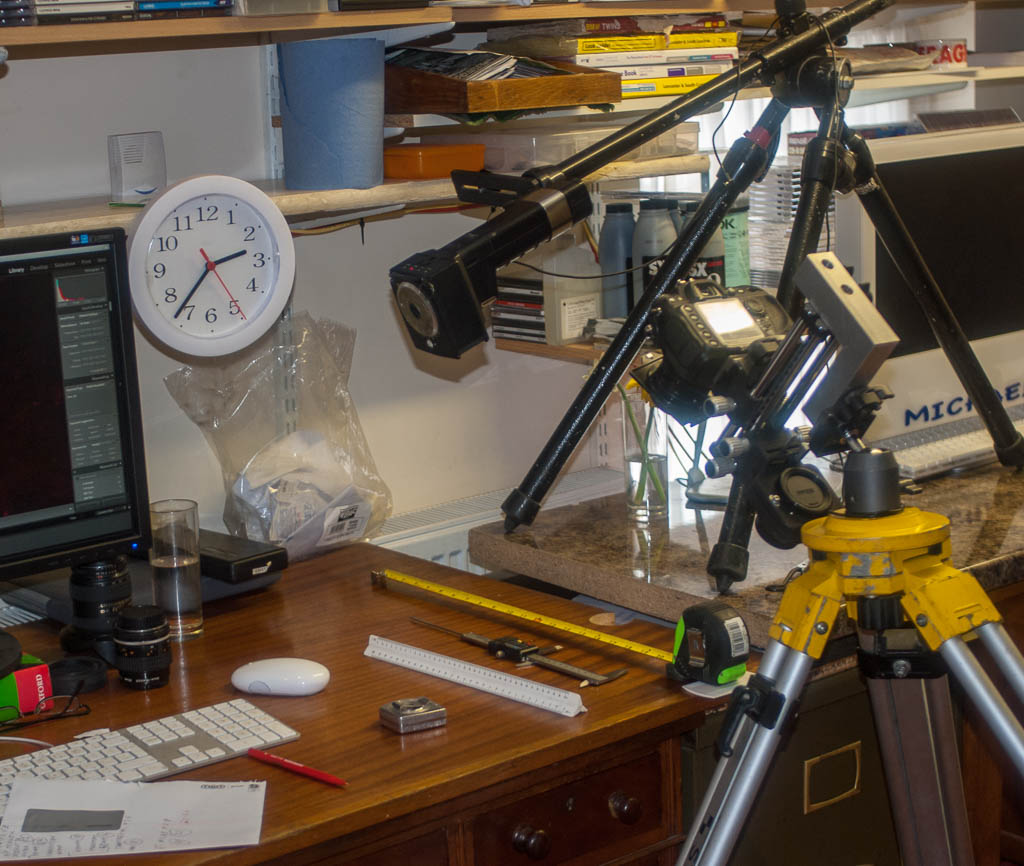
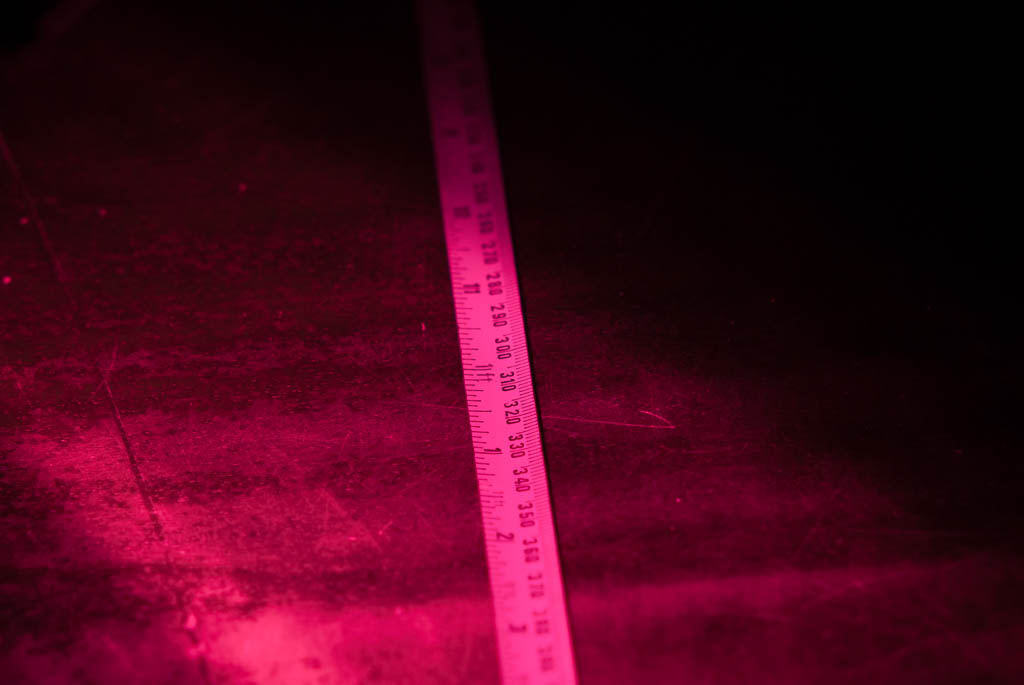
I tried various lenses but the Micro Nikkor to me seemed as good as any I have, although I do now have an EL 105mm f/5.6 lens with a helicoid. I have yet to try that combination.
A couple of images taken with this setup, Rudbeckia in UV: D200UV with Micro Nikkor 55mm f/2.8.
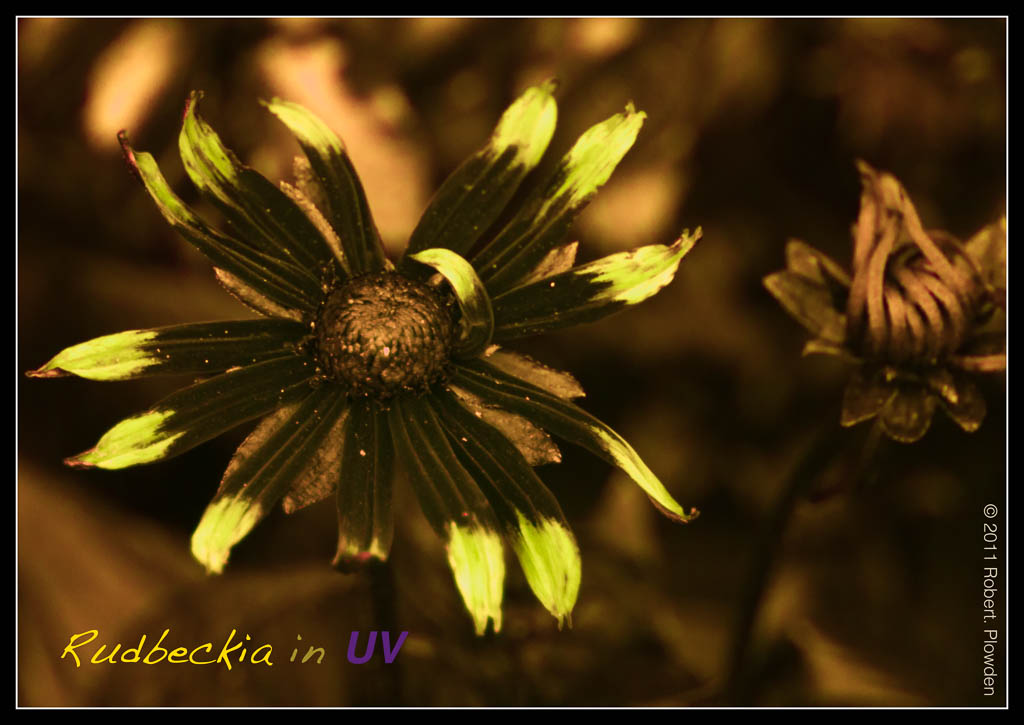
Dandelion in UV.
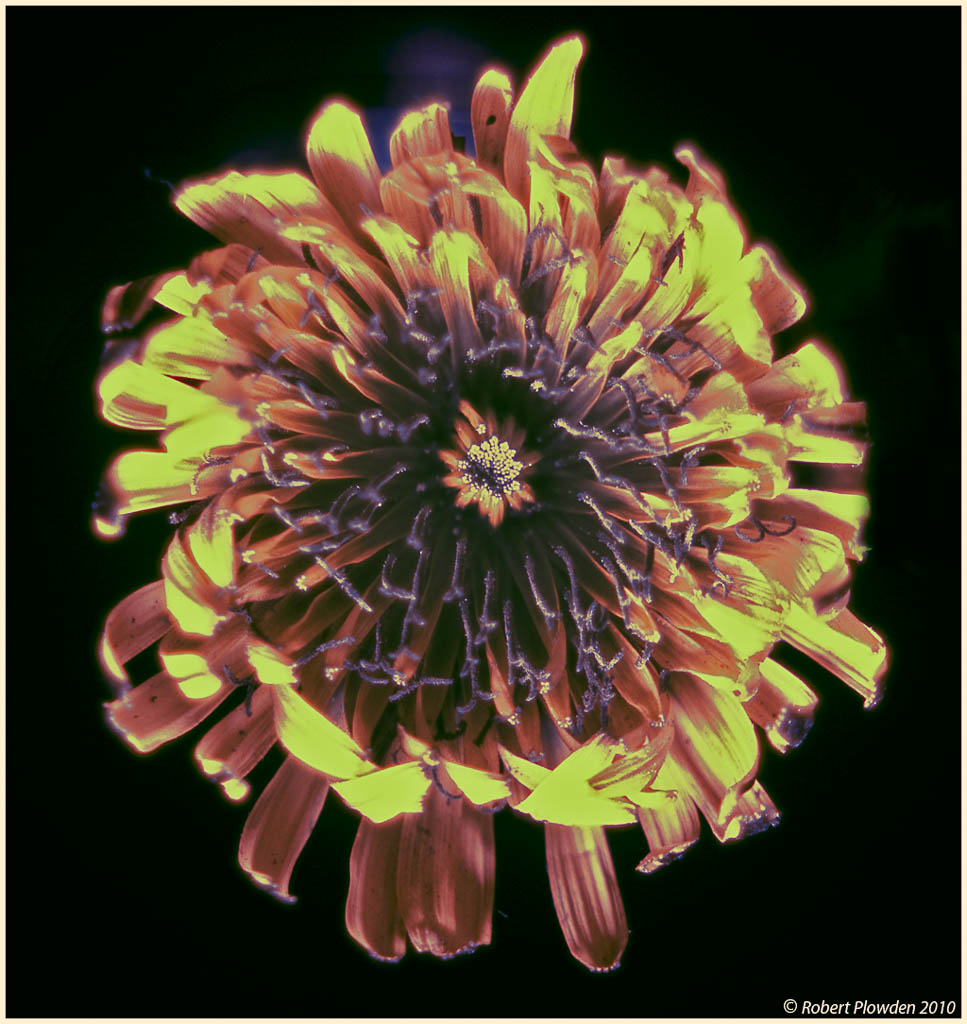
Not forgetting IR, Rudbeckia, with my 720nm D200 and I think the Micro Nikkor 55mm f/2.8.
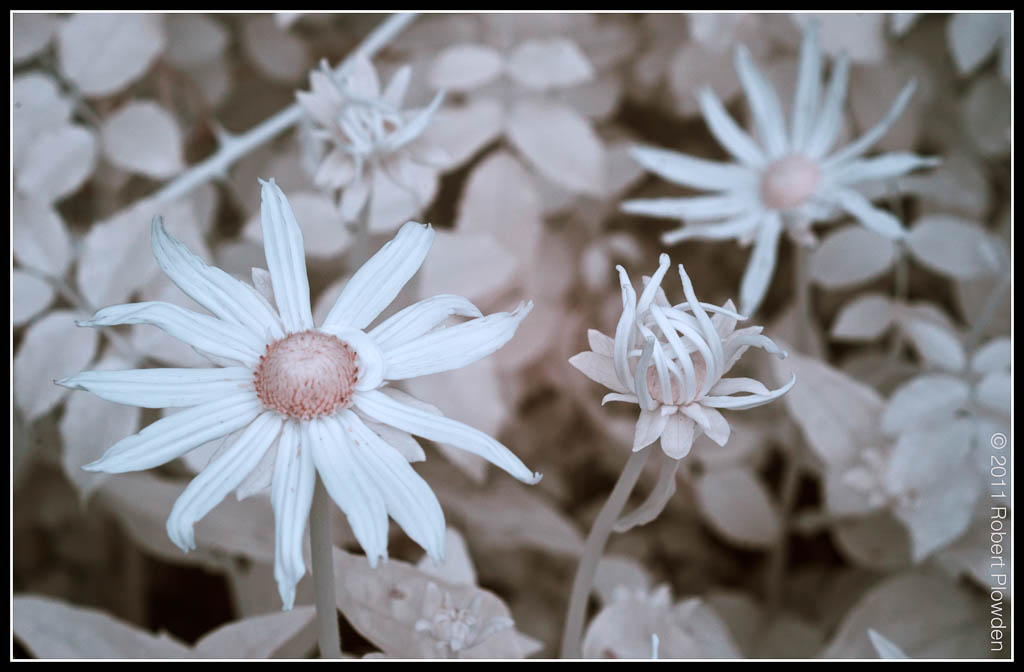
Last but not least, I rather like the induced fluorescence effect, gerbera daisy, visible spectrum D200 camera, illuminated with my Nichia 365nm lamp and I probably used the Micro Nikkor 55mm f/2.8.
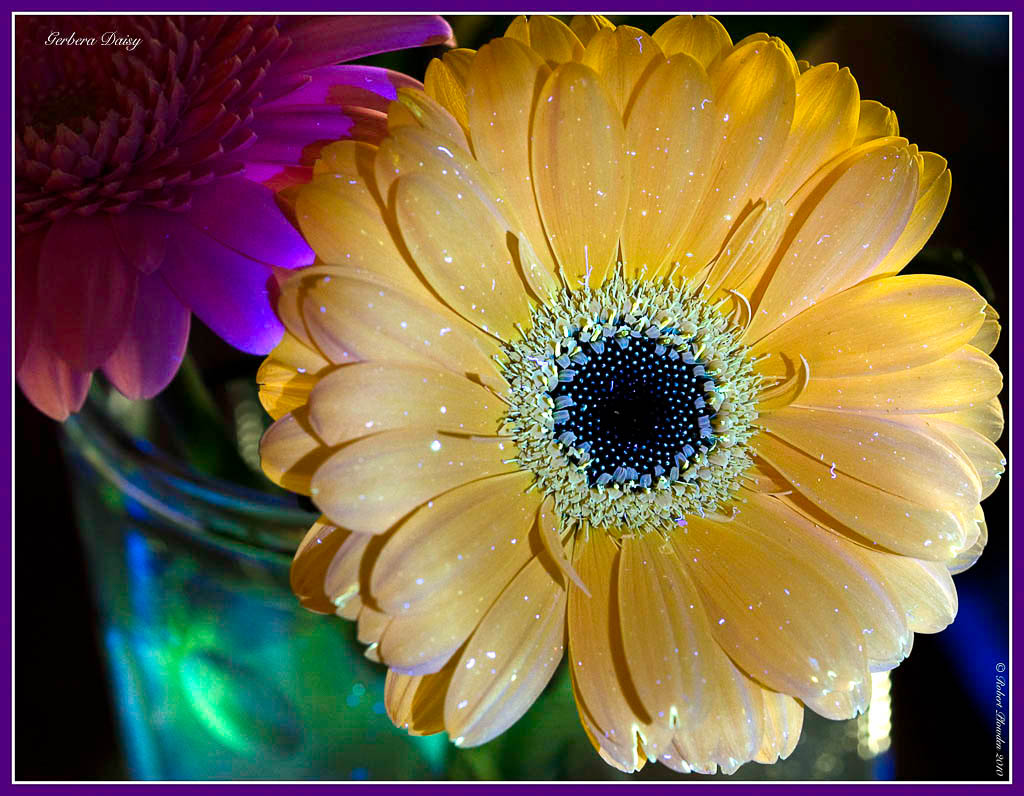
Hope the above is some help, do NOT claim expertise, a lot of fumbling in the dark (literally!). Much assistance from Klaus with the filters and lighting and from Bjørn's website etc. to surmount the obstacles.